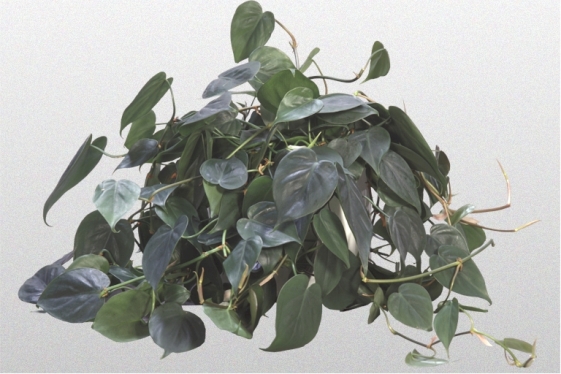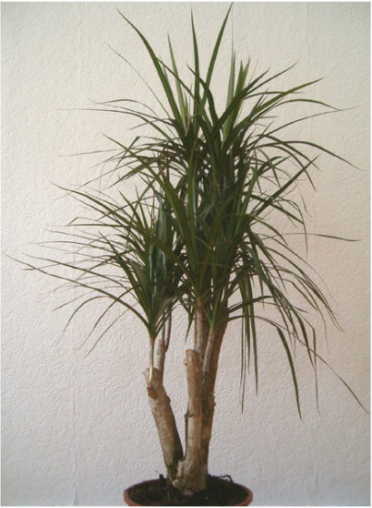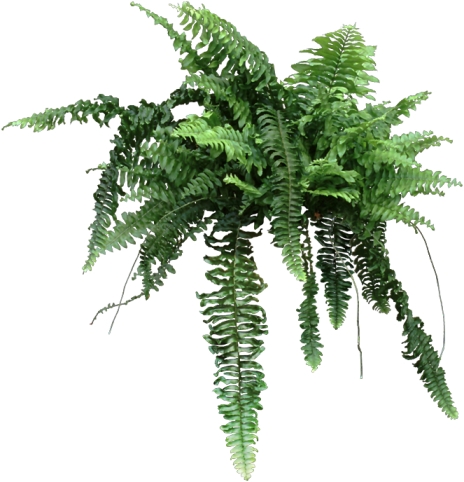A study sponsored by NASA and conducted by Dr. Bill Wolverton concluded that houseplants are able to clean the air of harmful chemical toxins such as benzene, formaldehyde, and trichloroethylene; unfortunately none have been shown to remove tobacco smoke from the air. At the time of the study, NASA was attempting to find ways to purify the atmosphere in future space stations so humans could inhabit them for a prolonged period. Today we can all benefit from this research by using certain easy to find houseplants and flowering plants to remove harmful gases and purify our environment.

It’s been known for quite a while that plants remove carbon dioxide from the air and add oxygen. Now we know that plants also remove some airborne pollutants when they engage in photosynthesis and that the soil in plants can directly absorb certain environmental toxins. Airborne pollutants come from such common items as carpets, paint, copy machines, manufactured wood products, pesticides, upholstery, laminated counters, plastic wallpaper, detergents and even paper towels. These materials are said to “off-gas” toxins into the interior spaces of homes, offices, & buildings. Biologic air-born contaminants such as pollen, mold, bacteria, and viruses grow in humidifiers, air conditioners, ducts, carpets, ceilings, & tiles.
It’s interesting that new energy efficient tightly sealed buildings, which are better insulated than older buildings and furnished with more up to date synthetic products, have more air quality problems than older drafty buildings. The new and better construction not only helps to conserve heating and air conditioning, it also traps toxic gases and prevents them from escaping from the building. This problem has been given the name “sick building syndrome.” People working or living in areas where the air is stale and the circulation poor, may experience headaches, nausea, fatigue, sore throat, and eye irritation. Using the proper number and the correct variety of houseplant can greatly reduce air quality problems and the illnesses caused by them.
NASA recommends using at least 15 to 18 houseplants to purify the air in a 1,800 square foot area. The pot sizes of these plants should be at least 6”-8” in diameter. The houseplants that the NASA study recommends originally grew in areas that received only indirect filtered light. These low light conditions helped the plants develop a very efficient method of photosynthesis, which in turn allows them to efficiently process the gases in the air. The soil and the roots of the plant aid in this process and are especially helpful if you remove the bottom leaves so more of the soil surface is open to the air.
Probably all house plants have some environmental benefits, but as of right now, the top clean air plants are considered to be:
Bamboo Palm
A beautiful compact palm, native to Mexico and Central America, that is excellent for low light areas. Indoors, a Bamboo or Reed Palm as it is sometimes called may reach a height of 5-7ft. and a width of 3-5ft. with multiple reed-like stems growing in clumps. This palm is hardier than an Areca Palm and less expensive than a Kentia Palm. It’s effective in removing formaldehyde and xylene from the air.
Chinese Evergreen
A Chinese Evergreen, or Aglaonema, is a hardy hybrid of two plants in the Aroid family that originally came from the subtropics of Southeast Asia. Chinese Evergreens can be used as an upright table plant or, as it gets larger, a bushy floor plant. All of the many varieties of these plants have long shiny leathery leaves with unique patterns of green, gray, and cream. It’s effective in removing benzene and formaldehyde from the air.
Dracaena Janet Craig
Dracaena Janet Craig, native to tropical Africa, grows well in low light and needs very little water. They have sword shaped, leathery, dark green shiny leaves that are about 3” wide and 2ft. in length. It’s effective in removing formaldehyde, benzene, and xylene from the air.
Peace Lily
A lovely flowering plant with very large, glossy, dark green leaves and impressive white flowers that often last for weeks. The flowers are really spathes or modified leaves. Since a Peace Lily originally grew on the floors of rain forests, it is one of very few indoor plants that bloom even in medium to low light. It’s effective in removing formaldehyde, benzene, and trichloroethylene from the air.
Snake Plant
Snake plants, originally from South Africa, are another one of those hardy almost impossible to kill plants that thrive on neglect. Certain varieties such as “Trifasiata” have long, thick, stiff, upright leaves that can reach 4ft. while other varieties such as the Hahni have very short compact leaves that are only 4” tall. It’s effective in removing formaldehyde and xylene from the air.
English Ivy
English Ivy can be found in over 100 different sizes, colors, and leaf shapes. This beautiful draping plant is highly poisonous, so be careful to keep it away from young children and pets. It’s effective in removing formaldehyde, benzene, and xylene from the air.

Dracaena Marginata
Dracaena Marginata can be used as a table plant, floor bush, or a tall tree with multiple canes and hundreds of long thin green leaves. A Marginata, or Dragon Tree, is an easy-care durable plant well suited for offices and homes and a favorite choice of interior designers. It’s effective in removing formaldehyde, benzene, and xylene from the air.
Dracaena Warnekii
A Warnekii, with its long, pointed, green and white striped leaves is one of the few colorful plants that can survive in low light conditions. This is an easy care plant that thrives on neglect. It’s effective in removing trichloroethylene, benzene, and xylene from the air.
Golden Pothos
This highly adaptable glossy- leafed plant with heart shaped leaves is one of our most common indoor houseplants and with good reason. It is easy to care for, grows almost anywhere, makes a lovely sitting, hanging, or climbing plant, and is very forgiving. It’s effective in removing formaldehyde from the air.
Ficus Benjamina
Ficus trees have the reputation of being temperamental high light plants, but today there are new hardy varieties that will grow in almost any location. It’s effective in removing formaldehyde and xylene from the air.
Philodendron
There are over 200 different varieties of philodendron, all with different sized, colored, and shaped leaves. You’re sure to find one to fit your specific location. It’s effective in removing formaldehyde from the air.
Boston Fern

This wide spreading plant with beautiful arching fronds usually does best in hanging baskets. The fronds can be as long as 2-3 feet and 4-6 inches in width. Each frond has small leaflets (pinnae) on either side of a midrib, and the leaflets have slightly serrated edges. It’s effective in removing formaldehyde and xylene from the air.
Gerbera Daisy
This is an ornamental outdoor plant from the sunflower family. It can be kept in a pot indoors for short periods of time and then planted outdoors. It’s effective in removing formaldehyde, benzene, and trichloroethylene from the air.
Chrysanthemum
Mums, as they are often called, are a perennial flowering plant that can also be kept indoor for a short time and then planted outside. It’s effective in removing formaldehyde, benzene, xylene, and trichloroethylene from the air.
These plants will not only brighten up your home and office, they will also greatly improve the air you breathe.
Judy Feldstein is the founder of Foliage Unlimited, one of the largest interior plant design, sales, & maintenance companies in Arizona. Judy’s website HousePlant411.com helps plant enthusiasts identify, select, and care for houseplants.
Related Articles & Free Email Newsletter
Increasing the Lifespan of a Succulent Plant



Comment here